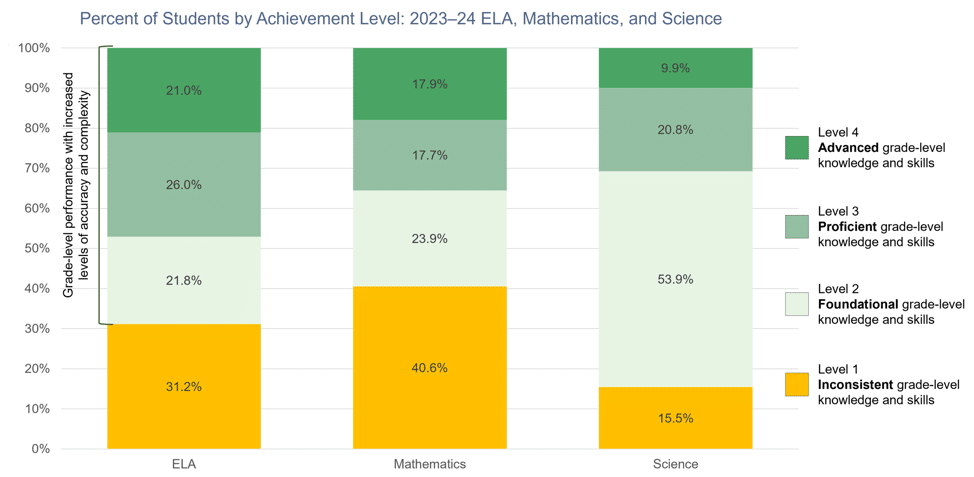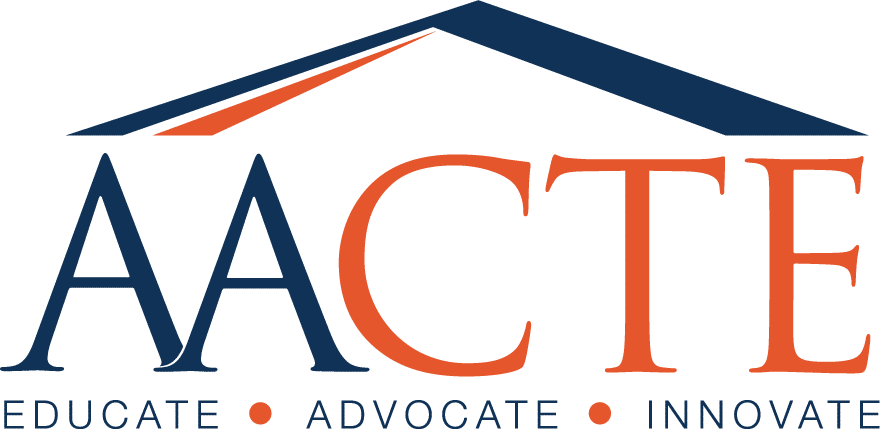2023–24 California Statewide Assessment Results Show Overall Student Progress
Continued Gains Made by Students Across State; Accelerated Progress Made by Socioeconomically Disadvantaged Students and in Multiple Districts
The California Department of Education (CDE) released assessment results that show continued progress made by California’s K–12 students, including accelerated progress in closing equity gaps for socioeconomically disadvantaged students, Black/African American students, and Hispanic/Latino students.
The results include data for the California Assessment of Student Performance and Progress (CAASPP) and the English Language Proficiency Assessments for California (ELPAC).

California’s statewide results are especially encouraging when considering the proportion of high-need students has also increased in California. Specifically, the proportion of students tested who are socioeconomically disadvantaged increased from 63 percent in 2023 to 65% in 2024—an increase of more than 60,000 students. The percentage of socioeconomically disadvantaged students meeting or exceeding standards rose 1.5 percentage points in English language arts/literacy (ELA), 2.1 percentage points in mathematics, and 1.4 percentage points in science.
Overall, the percentages of California students meeting or exceeding standards (demonstrating proficient or advanced grade-level knowledge and skills) in ELA, mathematics, and science increased, from 46.7 percent to 47.0 percent in ELA, from 34.6% to 35.5% in math, and from 30.2% to 30.7% in science.
- Grade six ELA has the largest increase in average scale score—a 3.4-point increase compared to 2022–23. Grade eight mathematics has the largest increase—a 6.2-point increase—in the average scale score compared to 2022–23. Mathematics scores across all grades increased compared to 2022–23.
- Black/African American and Hispanic/Latino students showed positive score trends in mathematics across all grades. Black/African American students in grade three had the highest increases compared to Black/African American students in other grades. Hispanic/Latino students in grade six saw the greatest improvement in ELA compared to Hispanic/Latino students in other grades.
- Mean scale scores for foster youth students increased in ELA at grades three, six, eight, and eleven, in mathematics at grades three, six, eight, and eleven, and in science at grade eight and high school, compared to the previous year.

The percentage of students reaching Overall Performance Level 4 for the Summative ELPAC decreased by less than two percentage points. An Overall Performance Level 4 is used as the first criterion for meeting the state’s reclassification requirements for English language proficiency. The ELPAC is administered to students in grades K–12 who have been identified as English learners to measure their progress toward English language proficiency in the four domains: Listening, Speaking, Reading, and Writing.
“I commend California’s students and educators for their hard work and continued growth in academic achievement across the state,” said State Superintendent Tony Thurmond. “We know the high potential of all California’s students, and we still have a ways to go to ensure that every child is supported to build strong academic skills and access a bright future. We are providing key resources for all schools to get there, including providing funding for reading coaches, high-dose tutoring programs, extended school days, and professional learning for educators.”
“Today’s results suggest that California’s public schools are making encouraging gains in all of the key subject areas, and these gains are largest for our most vulnerable groups of students,” said State Board of Education President Linda Darling-Hammond. “Our Governor and the Legislature have, in recent years, prioritized forward-thinking investments in K–12 public education with a focus on accelerating learning and equity: community schools, expanded learning time, transitional kindergarten, and investments in literacy and math. Those efforts are paying dividends, and we need to ensure that these efforts to support learning recovery and whole child supports continue in the coming years.”
In many school districts across California, significant increases in student achievement tell a story about how forward momentum for academic achievement has been created following the COVID-19 pandemic and suggest a blueprint for how further acceleration of academic progress could occur statewide.
Read the full report on the California Department of Education website.
Tags: data, equity, research, state policy






